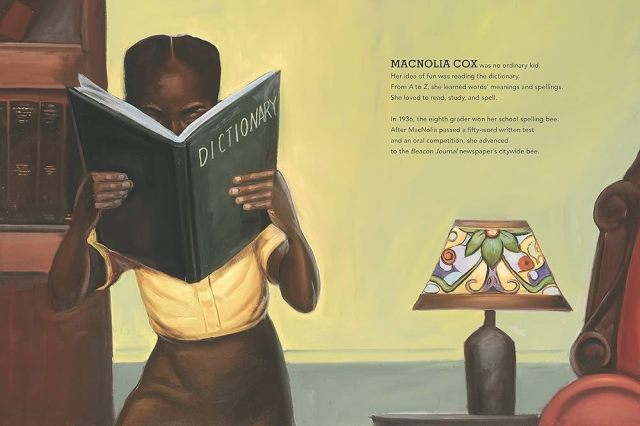The author/illustrator begins by explaining she wanted to put herself in the place of animals that occupy homes so different from those of humans, yet fulfilling many of the same functions. She tells us:
“To explore these unique places, I’ve had
to bend, and shrink, and squeeze, and
let myself be transformed in weird and
wonderful ways.”
She then takes us on a tour of 27 homes occupied by creatures ranging from tiny weaver ants to Sumatran orangutans.
Her words are translated from the French by Vineet Lal, who manages to reflect the sensibility and beautiful imagery of the original text. The poetry is free verse, meaning that it does not rhyme, but is still clearly an artistic rather than a narrative expression of ideas. For example, about the “silky apartment” of the comet moth, the author writes:
“My satin pouch
is pierced by the night,
and the tropical rains
pass through without flooding it.
This is a membrane-house
where I remain in seclusion
and from which I will emerge
metamorphosed.”
The showy cross orbweaver spider says “I live in the vertical plane…in [a] satin-smooth spiral . . .”
The tiny hummingbird explains it has a “doll’s teacup of a nest” while the common octopus begins:
“I’ve donned my ocean floor dress,
and under a ceiling decorated with shells
I unwind on my couch of fine sand . . . “
Many of the passages, like that about passerine birds, offer for reflective readers lessons in living together. Others explain how some animals manage solitary survival. Certainly there is much to discuss and learn about in addition to the pure aesthetic enjoyment of the words and illustrations.
At the end of the book, the author provides thumbnail portraits of the 27 animals featured in the book; a glossary; and recommended resources for more information.
The digitally produced cross-hatched drawings demonstrate the author’s dedicated observation of a variety of creatures. These admirably include some under-appreciated species (such as the orbweaver spider) that often inspire fear or loathing rather than admiration for their beauty and contributions to the biosphere.
Evaluation: This science book, recommended for readers aged 5 and up, is rich with poetic verse and mesmerizing art. Children will want to return to it often to learn more about the creatures introduced by Simler. They can be encouraged to contemplate how their own living conditions compare, and what that suggests to them about the essentials for existence.
Rating: 4/5
Published in the U.S. by Eerdmans Books for Young Readers, 2024
























